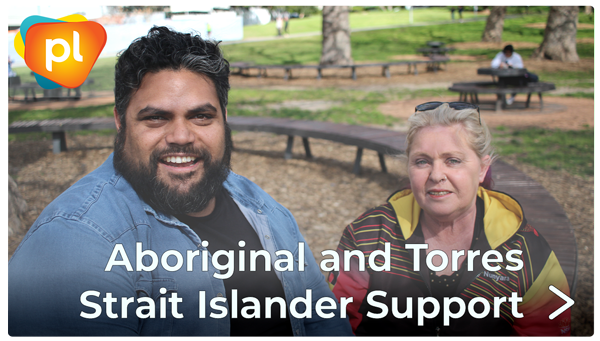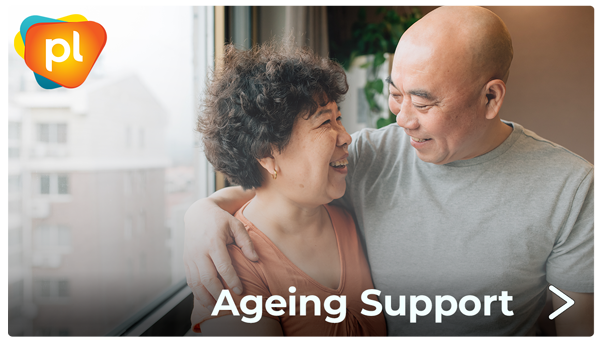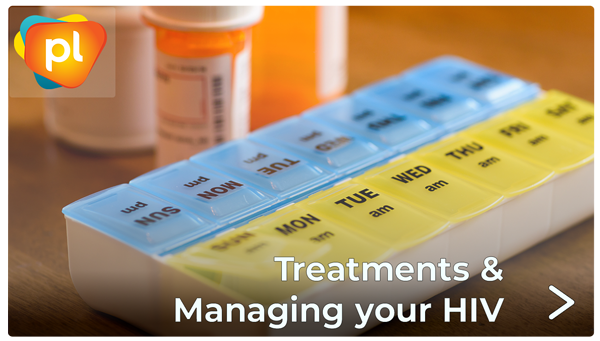
I love history. Always have, and excelled at it at school. Not just local and world history in general, but individuals’ personal history as well.
Though often distorted, edited to fit the times, world history is fixed. There is only one truth to it, no matter what narrators may say. Personal histories are quite a different thing. A hundred people will produce a hundred histories, each distinctly individual, never duplicated by anyone else.
I have written much about my experiences with HIV over the last 25 years, most of it via “Talkabout”. Though personal, and often intimate, none have really gotten into the nitty-gritty of my personal, lived experience.
This reflective piece is to rectify those omissions, giving both a factual and lived insight into a period in gay history that should never be forgotten.
The recent COVID-19 experience really drove home to me how HIV, its past, and still present history, was no longer of any consequence.
COVID was being spoken about as though it is the only pandemic of recent time. It would be interesting to see where COVID sits in 40 years time.
So this is my history with HIV/AIDS. It is more detailed, and more anecdotal than my previous writings…which also means it’s much longer. It is, with no strutting involved, a story of survival. If survival is the gauge of one’s strength and tenacity, then I have come out at the end of it with flying colours, the glass half full, so to speak.
Over 40 years have passed since I sero-converted to HIV. I remember it well.
I was managing a retail store in Sydney and was due to go on leave in August 1983. My last day before going off on my break was hellish. Temperature, diarrhoea, extreme lethargy, disorientation…I couldn’t wait for the day to end. As it turned out, it went on for the fortnight.
I had only been out for three years…a late closet jumper…and I have to admit to being very trashy, making up for lost time as it was. I have wondered over the years, as have many, just who it was that infected me…and where!? Was it that hot American boy who was staying in The Connaught in Darlinghurst, who picked me up one night just after my return from Melbourne (very likely!). Perhaps it was a Melbourne or Sydney local who had returned from a holiday in the USA, or, like me, gotten off with American boys (the flavor of the month) here! Of course, I’ll never know, but the speculation remains!
Since that time, both as a writer, and as a 12-year public speaker with the Positive Speakers Bureau (PSB), I have told of my journey with HIV/AIDS. My story has always had constraints, either in word length with articles, or time restrictions in talks. There is a lot more to the story than I tell in these…often done by rote…sessions.
I have just finished reading Cheryl Wares “HIV Survivors In Sydney – Memories Of The Epidemic” which focused on the years between 1982 and 1996. This was an oral history project that I was part of in 2014, contributing a 2½ hour interview with Cheryl when I lived in Gaythorne, Queensland. I was disappointed in the book, for as much as Cheryl wanted it to be a story of ordinary gay men surviving HIV/AIDS, and how it affected their lives both then, and now, it really came across as a voice for, and was hijacked by HIV activists, rather than just us bar crawling gays-on-the-Golden-Milers.
I was left feeling that both my contribution, and the contribution of others like me who weren’t part of the activist community was largely overlooked, again. I know it sounds like sour grapes, and mine is only one of a thousand survivor stories, but like many others I want there to be some sort of public record of many aspects of the HIV/AIDS survival story that doesn’t make it into many articles, or talks.
The one thing Cheryl’s book did do was to invoke memories of so many personal experiences…and feelings…that made my personal HIV journey…MY journey.
This is not the first time I’ve contributed to interviews and photo sessions on HIV/AIDS survival, and either been left out in the cold, or had my story overshadowed by activists, or academics. Because this is a personal transcript, I am not putting a word limit on it, so it’s going to be long.
I want all this unknown or forgotten information to be in one article. It’s not a soul-cleansing, so don’t get me wrong. I see it more as an addendum to HIV history. I want it in writing before I either forget it, or confuse it in the fog of ageing. Luckily, I am a bit of a hoarder, so have copies of a lot of the things I will be referencing as the story unfolds. To make sense of it, I guess I need to go back to the beginning.
I have written a lot on my family, the dysfunctionality of my growing up, in my blog (http://timalderman.com), so I am not going to rehash already-told stories here. In a nutshell, I was born in St. George Hospital, in Kogarah, NSW on the 18th January 1954. I had one younger brother Kevin, who was born in 1959. My childhood was pretty uneventful until I was 11, where once my mother deserted the family home, the housekeeper from hell entered our lives. The death of my brother, at my fathers hands, on the cliff top known as The Gap blew it all to the shit. My knowledge of ‘being different’ at age nine, and my eventual coming out are also on my blog, so let’s move along.
1980 finds me in Melbourne, where I had just come out as a 26 year-old. A HIV story begins. Little did I know that both my life as a gay man, and my life as a HIV+ man were to walk the same road.
So what was it really like in 1982 to be reading snippets in our local gay press about this mysterious illness. KS, or Kaposi Sarcoma was rearing its ugly head in the gay ghettos of America, that seemed to be targeting gay men who frequented the saunas, and quickly killing them. There was cynicism and disbelief to start with, and the surety that within a short period of time they would find an antibiotic to clear up yet another sexually transmitted infection (STI) or in those days, sexually transmitted disease (STD).
However, the snippets were to become columns, the columns became pages as the mysterious and deadly virus leapt from the shores of America and found its way into the gay scene here. Originally labelled as GRID (Gay-Related Immune Deficiency), also the Gay plague or the Gay syndrome in 1981, it was followed by human T-lymphotrophic virus type 3 (HTLV-3) in 1983. The panic and fear began!
Our response was mixed. The first case of AIDS was reported in Sydney in October 1982 by Dr Ronald Penny. In July 1983, the first recorded Australian death from AIDS-related causes occurred in Melbourne.
The most notable death in these early days was Bobby Goldsmith in 1984.We had our usual ratbags who yelled and screamed about “God’s vengeance on the evil, sick and perverted gay lifestyle”, obviously a different God to the compassionate, all-forgiving one that Christians liked to rant about. The most vocal and notable being the Rev Fred Nile MLC and his Festival of Light, and Call To Australia affiliations. These advocates of hate and intolerance who demanded quarantine for all infected persons, along with those of the citizenry who either quietly or vocally wished that we would all die or just go away. Mind you, we did have our fun with them.
I vividly recall one early Mardi Gras. Back then, joining the parade was a very informal process. The Festival of Light group was protesting at the Parade’s starting point. Myself and some friends, dressed in leather chaps with our bare backsides hanging out of them, deliberately stood in front of them, shaking our booty, much to their horror and disgust.
There is no watering it down…discrimination and stigmatisation was rife. It was frightening!
Thankfully, common sense eventually prevailed and both the government and the grassroots gay community combined to put both AIDS Councils and NGO programs in place. Our quick response was instrumental in Australia always being at the forefront of HIV/AIDS care.
Within two years, every state had an AIDS Council. The formation of various support organisations such as The Bobby Goldsmith Foundation (BGF), Community Support Network (CSN), PLWA (which was to become PLWH/A, eventually Positive Life NSW), ActUp, and Ankali quickly started along with the beginning of NAPWA, the National Association of People with AIDS. Without these organisations life would have been grim for those who found themselves living with the virus. Some provided financial support, others offered emotional and spiritual support. Many of us had quite suddenly found ourselves with a death sentence hanging over our heads, along with the fear of unemployment and homelessness in the midst of the hysteria going on.
In 1985, HIV testing was introduced. It was a bit of a strange affair in the early days. Due to the hysteria, discrimination, and fears of being dragged off to quarantine, which was a genuine concern. No one wanted their personal details on a database. At clinics like The Albion Street Centre, you chose a fictitious name, and the clinic then issued you with a number that then became your ID. Mine was Peter 3080. When things cooled down, the fictitious name was dropped, and replaced with your real name.
You had a blood test, and waited for two to six weeks to get your result. Talk about high anxiety! At the time of my HIV test, I already suspected that I had sero-converted and was going to come up HIV+. I was right. Counseling? Oh yeah, we had a lot of that back then. “You’ve got about two years to live.” Shrug shoulders. “Okay.” And off we went knowing the inevitable was rapidly approaching!
The initial window periods were reasonably long, but got much shorter as time progressed, and the virus mutated. I did not get seriously ill with AIDS until 1996. I’d always put this down to getting infected early in the history of the virus, thus getting a much weaker mutant of the virus than what was to come, though there were other factors in play.
I was in a relationship at that time, and my partner came up HIV-. Already the juxtaposition between positives and negatives had begun. The strange thing was that I felt no need to hide my status. I turned up at the Oxford Hotel and said to friends…’oh well, I’m positive.’ Of course, I was far from being the only one.
Then the horror stories started! The disgusting treatment of young Eve Van Grafhorst is something for all Australians to be ashamed of. Born in 1982, she was contracted HIV via a blood transfusion. When her parents attempted to enroll in her Kincumber pre-school in 1985, other parents threatened to withdraw their children due to the (supposed) risk of infection. The family was literally hunted out of town, and forced to leave the country for NZ.
I will never forget the sight of this poor, small, frail girl on her way to the airport. I, like many others, was horrified that this could happen in Australia. Thankfully, her NZ experience was quite the opposite, and she lived a relatively normal life until her death in 1993 at 11 years of age. Her parents received a letter from Lady Di praising her courage.
– Tim Alderman
Published in Talkabout #209 June 2024






